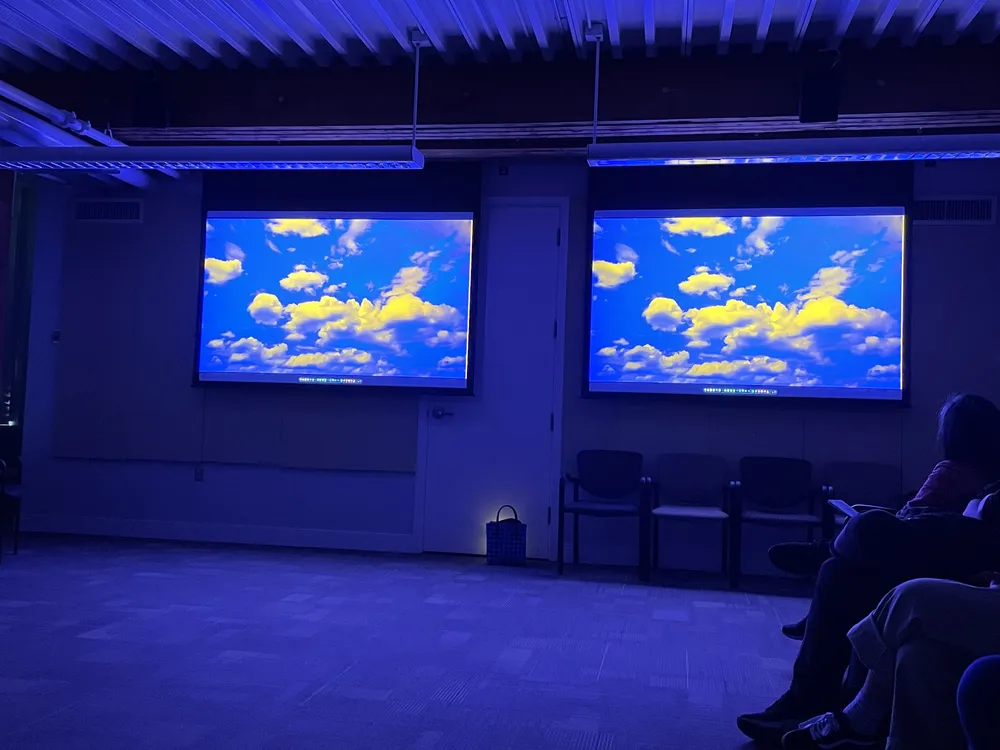On March 24 at the C.K. Choi Centre, the balikbayan box came to life at Balik, Bayan, Box: An Experimental Movement Study In Transit. A balikbayan box is a remittance box that many members of the Filipino diaspora, including but not limited to Overseas Filipino Workers (OFWs), send home to family in the Philippines. They often contain items like food, toiletries, toys, clothes and other gifts that the recipients may need or want.
Allen Baylosis, a performance artist and PhD student at the UBC Institute of Gender, Race, Sexuality and Social Justice (GRSJ), created this piece to explore how the balikbayan box figures into the Filipino diaspora, and its links to themes of movement and displacement.
UBC’s Centre for Southeast Asian Research hosted the performance, which was followed by a discussion with Baylosis, Dr. Leonora Angeles, the director of GRSJ, and Clarissa Cecilia Mijares, a PhD student in sociology at SFU.
We sat in a tight-semi circle — many of us Asian students, faculty and community members – creating a vulnerability resembling the piece itself.
Baylosis hoped it would be a discomforting experience in order to unsettle and stimulate conversation about the issues at hand. He succeeded: the performance was a dark and provoking study of the balikbayan box, its physical journey and its parallels to the invisible marginalization of OFWs who labour to assemble this box and its contents.
The performance immediately jarred the senses. Neon landscapes projected on screen smothered the space in lurid light, shifting surreally from sky to ocean. Dissonant clangs, scrapes and thuds boom and voices whispered eerily, like a host of spirits. It felts like we are the box itself, thrown into industrial containers, freighted over land and water to reach our destination. The whispers followed us all the way there.
Baylosis’ movements were constrained, physicalizing both the rigidity of the box’s corrugated confines and the socioeconomic spaces navigated by OFWs. In one scene, Baylosis laid down with the large box over him, moving arduously, convulsively, towards the centre. His arms occasionally burst out, as if reaching for something they can’t quite touch. Bloody handprints covered every side of the box, as searing red as the courier logo on the side.
Later, a lighter moment showed Baylosis shedding the box, emerging with a lit candle in one hand and a can of Spam in the other. His movements loosened, open and free.
This recalled the box’s original well-intentioned function: to strengthen the lines of love, family and remembrance across the diaspora. Though we both live in Canada, I think of my parents with a pang, sending me a box at the peak of lockdown filled with masks, Lysol spray and cans of food (Spam of course being chief among them).
In the final scene, Baylosis draped a heavy red cloth over his body, trailing behind him as he walked offstage. The box, as if part of a procession, followed.
In contrast to the heavier energy of the performance, the discussion was free-form. Baylosis was joined by Angeles and Mijares, who each discussed their personal responses to the piece and provided cultural context about the balikbayan box to non-Filipino audience members.
Due to the piece’s experimental nature and the audience's familiarity with Filipino studies, the discussion took on the generative quality of a workshop, with ideas flowing between the viewers and the panel.
Talk turned to the question of how can we interpret this cultural niche for a wider audience.
The balikbayan box was also used as a means to send foreign products that could not be found in the Philippines. Does the rise of social media and increasingly globalized markets render the box irrelevant? Would this question even relate to second- or third-generation Filipinos?
At this, Baylosis paused. “I don’t know,” he admitted. For Baylosis, this is only the first “reflection” in a possible series of further exploration.
He smiled, spreading his hands. “For now, this is my labour … and my offering.”
A previous version of this article stated that balikbayan boxes are sent by Overseas Filipino Workers (OFWs). Balikbayan boxes are also sent by many members of the Filipino diaspora, not limited to OFWs. This article was updated on March 31, 3:30 p.m. to amend this error.
Share this article
First online






